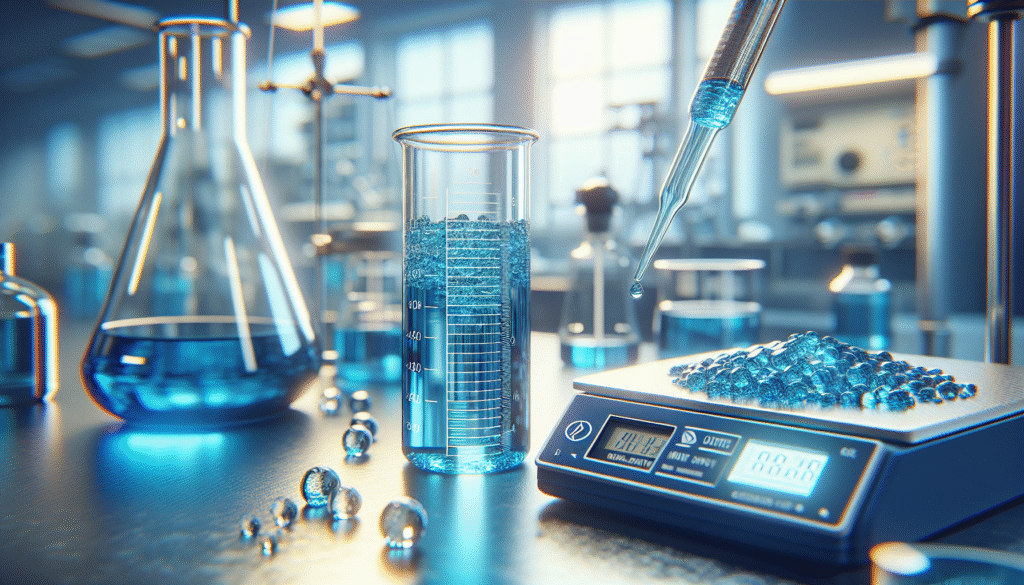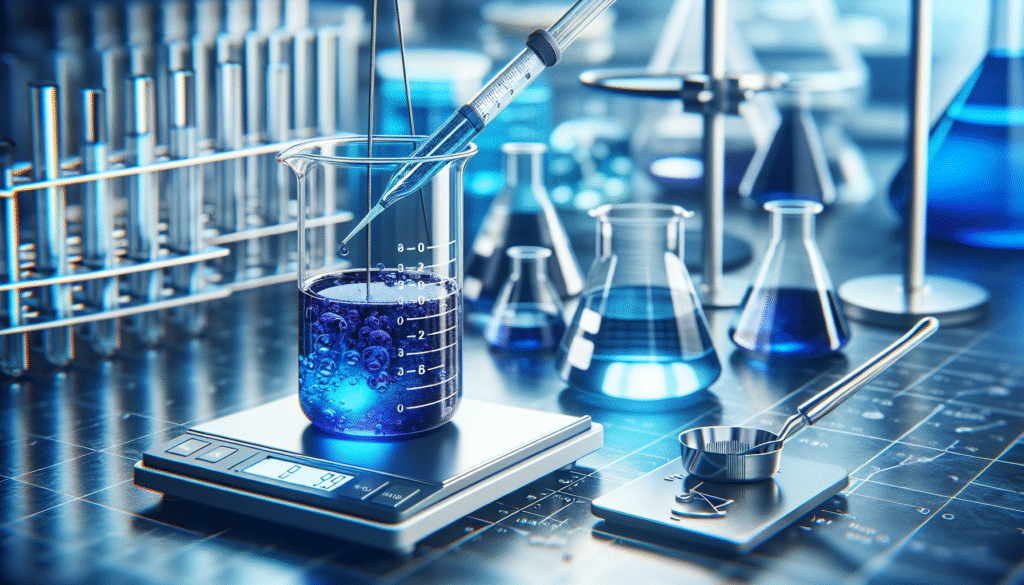
Have you ever pondered the precision required when measuring concentrations of substances like methylene blue? The accurate assessment of such concentrations is crucial in various fields, including clinical diagnostics, environmental monitoring, and even textile industries.

Understanding Methylene Blue
Methylene blue is a chemical compound commonly used in various biological and chemical applications. It serves as an indicator in redox reactions and is also employed in medical treatments and dyeing processes. The compound’s unique properties allow it to absorb light in specific wavelengths, making it useful for colorimetric analysis.
Importance of Accurate Measurement
Accurate measurement of methylene blue concentrations is vital. Any discrepancies can lead to misinterpretations of experimental data, which can have significant implications in research and practical applications. Therefore, understanding the methods available for measuring these concentrations is essential.
Methods for Measuring Methylene Blue Concentrations
Several approaches exist for determining the concentration of methylene blue, ranging from simple visual methods to advanced spectrophotometric techniques. Each method has its advantages and limitations, which are important to consider.
Visual Estimation
One of the simplest methods involves visual estimation, where concentrations are gauged based on color intensity. While this approach is quick and does not require specialized equipment, it lacks precision and subjectivity can skew results.
Colorimetric Analysis
Colorimetric analysis provides a more reliable method for measuring concentrations. This technique utilizes the principle that the absorbance of light is directly proportional to the concentration of the absorbing substance. To apply this method, follow these steps:
-
Prepare Standards: Create a series of known concentrations of methylene blue to establish a standard curve.
-
Measure Absorbance: Use a spectrophotometer to measure the absorbance of each standard and the sample.
-
Plot Standard Curve: Graph the absorbance against concentration to generate a calibration curve.
-
Determine Unknown Concentration: Use the absorbance of the unknown sample to find its concentration from the standard curve.
Spectrophotometric Methods
Spectrophotometry utilizes the measurement of light intensity as it passes through a solution. This method is widely favored for its accuracy and ease of use.
Basic Setup
To employ spectrophotometry, you need:
- A spectrophotometer
- Cuvettes that are compatible with the wavelength of methylene blue absorption (typically around 664 nm)
Steps to Follow
-
Calibrate the Spectrophotometer: Ensure the instrument is calibrated using distilled water or a blank sample.
-
Prepare Samples: Dilute the methylene blue samples as necessary, ensuring they fall within the measurable range.
-
Measure and Record: Insert the cuvette that contains your sample into the spectrophotometer, record the absorbance, and compare it against your standard curve.
High-Performance Liquid Chromatography (HPLC)
For precise analysis, High-Performance Liquid Chromatography (HPLC) is an excellent choice. This technique separates components of a mixture and quantifies them with high accuracy.
Mechanism of HPLC
In HPLC, the liquid sample is passed through a column containing a stationary phase. Depending on the interactions between the compounds in the sample and the material in the column, components will elute at different times, allowing for their individual quantification.
Performing HPLC Analysis
-
Sample Preparation: Filter and dilute your methylene blue sample if necessary to fit the HPLC system’s requirements.
-
Choose Appropriate Conditions: Set the mobile phase and flow rates as per the established methods for methylene blue analysis.
-
Calibration Curve: Similar to spectrophotometry, prepare a series of standards and generate a calibration curve based on peak area or height.
-
Analysis: Inject your sample into the HPLC system, collect data, and use the calibration curve to determine concentration.
Factors Affecting Measurement Accuracy
When measuring methylene blue concentrations, several factors can influence the accuracy and reliability of your results. It is crucial to take these into account to ensure your measurements are as precise as possible.
Light Conditions
The presence of ambient light can interfere with absorbance measurements. Conduct your experiments in a controlled environment, ideally under low light conditions, to minimize any potential discrepancies.
Temperature
Temperature variations can affect the absorbance characteristics of methylene blue, thus impacting concentration measurements. Ensure that you perform your analyses at a consistent temperature, ideally at room temperature.
Solution pH
Methylene blue displays different absorbance characteristics across varying pH levels. It is essential to measure the pH of your solution and perform your analyses at a consistent pH level to avoid inaccuracies.
Dilution Factors
When diluting samples, use precise volumes to ensure that your dilutions are accurate. Inaccurate dilutions can lead to significant errors in concentration readings.
Quality Control
Implementing quality control measures enhances the reliability of your methylene blue concentration measurements. The following strategies can be beneficial.
Blanks and Controls
Always include blanks (distilled water without methylene blue) and control samples (known concentrations of methylene blue) in your experiments. These serve as references to identify potential errors in measurement.
Replicates
Conduct replicates of your samples to ensure the reproducibility of results. By measuring multiple samples of the same concentration, you can identify inconsistencies and improve the reliability of your findings.
Documentation
Meticulously document your procedures, conditions, and results. Such documentation aids in tracing any errors that may arise and facilitates a thorough understanding of your methodology.

Conclusion
Measuring methylene blue concentrations accurately is a critical aspect of numerous scientific and industrial applications. Employing reliable methods such as spectrophotometry or HPLC, while controlling for factors that may influence accuracy, can lead to valid results. By understanding the importance of calibration, quality control, and careful observation, you can ensure the precision and accuracy of your measurements.
In the world of science and industry, accuracy is not merely a goal; it’s an imperative. By honing your measurement skills, you contribute to the broader quest for knowledge and understanding in your field. Your commitment to precision propels your work forward, whether in the lab, the field, or the production house. The power to measure accurately is in your hands, and with it, you stand on the brink of discovery and innovation.